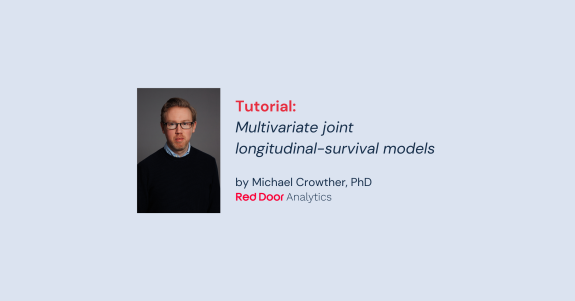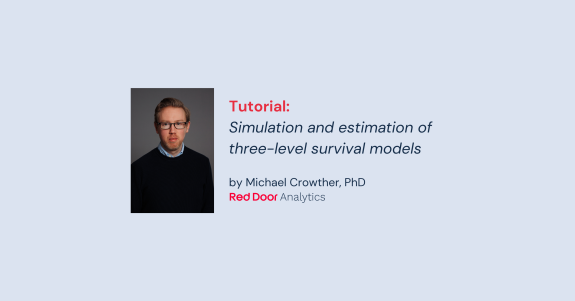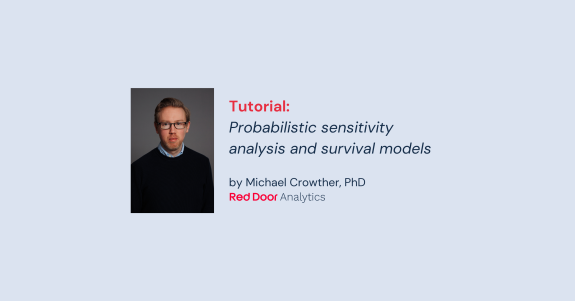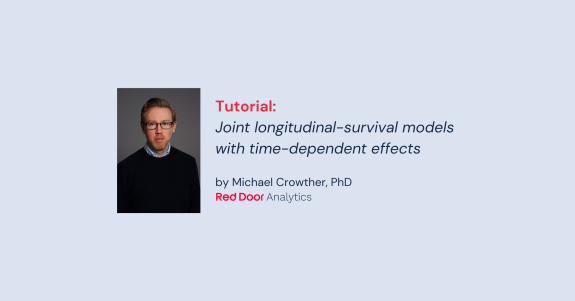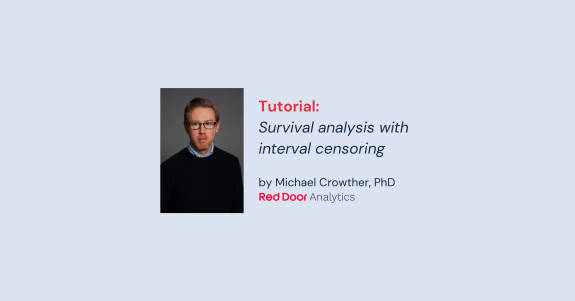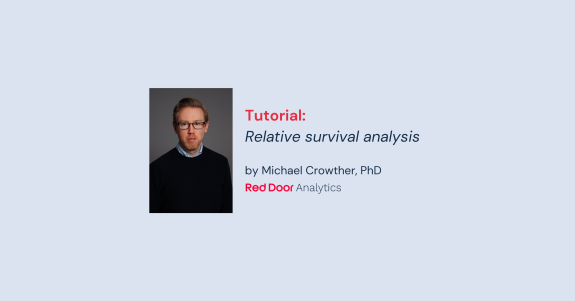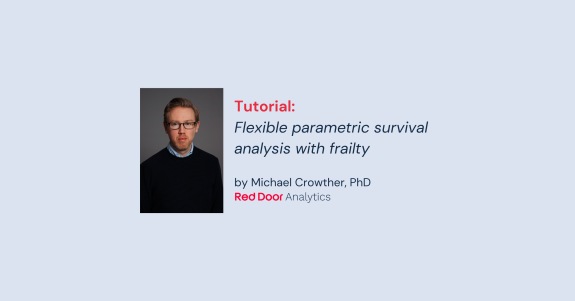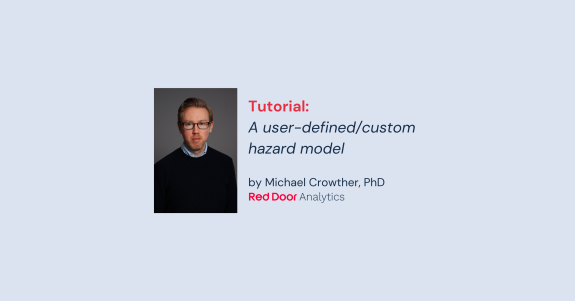Take a look at our freely available resources library, covering entry-level and advanced topics
RDA RESOURCES
Scroll Down

Multivariate joint longitudinal-survival models
Joint longitudinal-survival models have been widely developed, but there are many avenues of research where they are lacking in terms of methodological development, and importantly, accessible implementations. We think merlin fills a few gaps. In this post, we’ll take a look at the extension to modelling multiple continuous longitudinal outcomes, jointly with survival. For simplicity, I’ll concentrate […]
Learn more Simulation and estimation of three-level survival models: IPD meta-analysis of recurrent event data
In this example I’ll look at the analysis of clustered survival data with three levels. This kind of data arises in the meta-analysis of recurrent event times, where we have observations (events or censored), k (level 1), nested within patients, j (level 2), nested within trials, i (level 3). Random intercepts The first example will […]
Learn more Probabilistic sensitivity analysis and survival models
Today we’re going to take a little look into probabilistic sensitivity analysis (PSA), and how it can be implemented within the context of survival analysis. Now PSA is used extensively in health economic modelling, where a particular parameter (or parameters) of interest, are altered or varied, to represent different scenarios and levels of variation. We […]
Learn more Joint longitudinal-survival models with time-dependent effects (non-proportional hazards)
In this post we’ll focus on how to model time-dependent effects (non-proportional hazards), specifically within a joint longitudinal-survival model. Now joint models are becoming commonplace in medical research, but as always, the fundamentals still matter, and indeed are often ignored. We’re going to look at how to account for time-dependency in both baseline covariates in […]
Learn more Survival analysis with interval censoring
Interval censoring occurs when we don’t know the exact time an event occurred, only that it occurred within a particular time interval. Such data is common in ophthalmology and dentistry, where events are only picked up at scheduled appointments, but they actually occurred at some point since the previous visit. Arguably, we could say all survival data […]
Learn more Relative survival analysis
Relative survival models are predominantly used in population based cancer epidemiology (Dickman et al. 2004), where interest lies in modelling and quantifying the excess mortality in a population with a particular disease, compared to a reference population, appropriately matched on things like age, gender and calendar time. One of the benefits of the approach is […]
Learn more Flexible parametric survival analysis with frailty
This example takes a look at incorporating a frailty, or random intercept, into a flexible parametric survival model, and how to fit them in Stata. First we’ll use merlin to estimate our model, and then the more user-friendly wrapper function stmixed. More details on these models can be found in the following papers: Crowther MJ, Look MP, Riley […]
Learn more A user-defined/custom hazard model
This tutorial will illustrate some of the more advanced capabilities of merlin when modelling survival data, but with the aim of using an accessible example. During my PhD, Paul Lambert and I developed stgenreg in Stata for modelling survival data with a general user-specified hazard function, with the generality achieved by using numerical integration to calculate the cumulative hazard […]
Learn more Joint longitudinal and competing risks models: Simulation, estimation and prediction
This post takes a look at an extension of the standard joint longitudinal-survival model, which is to incorporate competing risks. Let’s start by formally defining the model. We will assume a continuous longitudinal outcome, $$y_{i}(t) = m_{i}(t) \epsilon_{i}(t)$$ where $$m_{i}(t) = X_{1i}(t)\beta_{1} + Z_{i}(t)b_{i}$$ and \(\epsilon_{i}(t)\) is our normally distributed residual variability. We call \(m_{i}(t)\) our […]
Learn more 1
2

